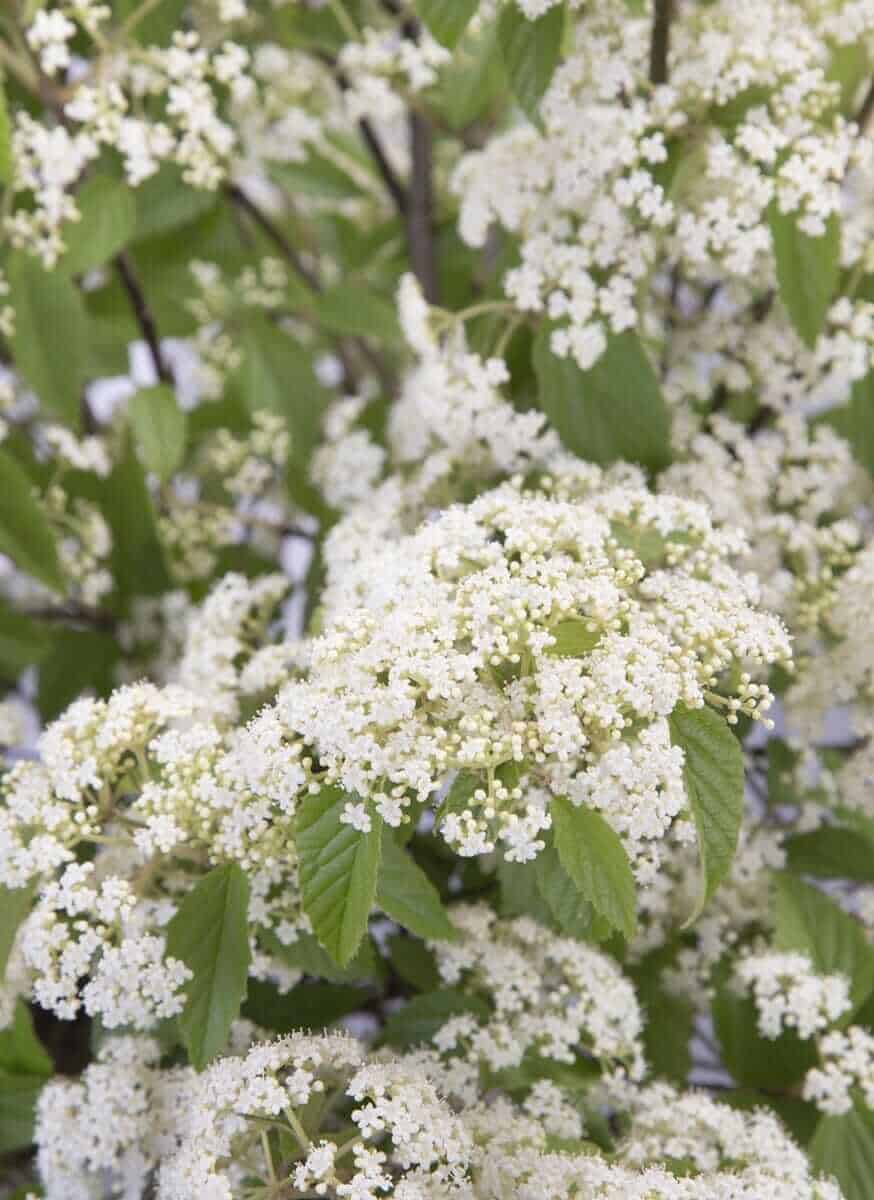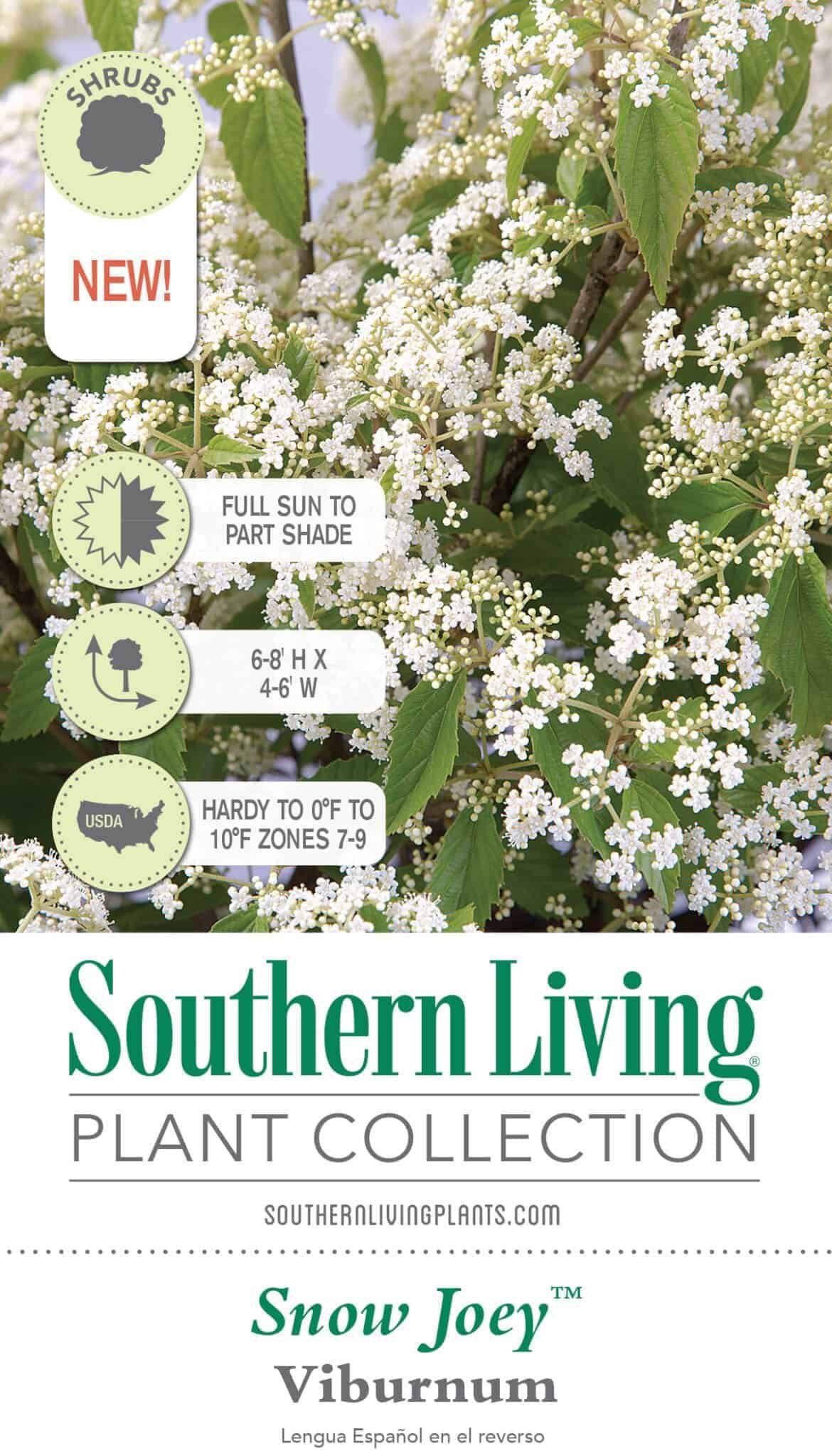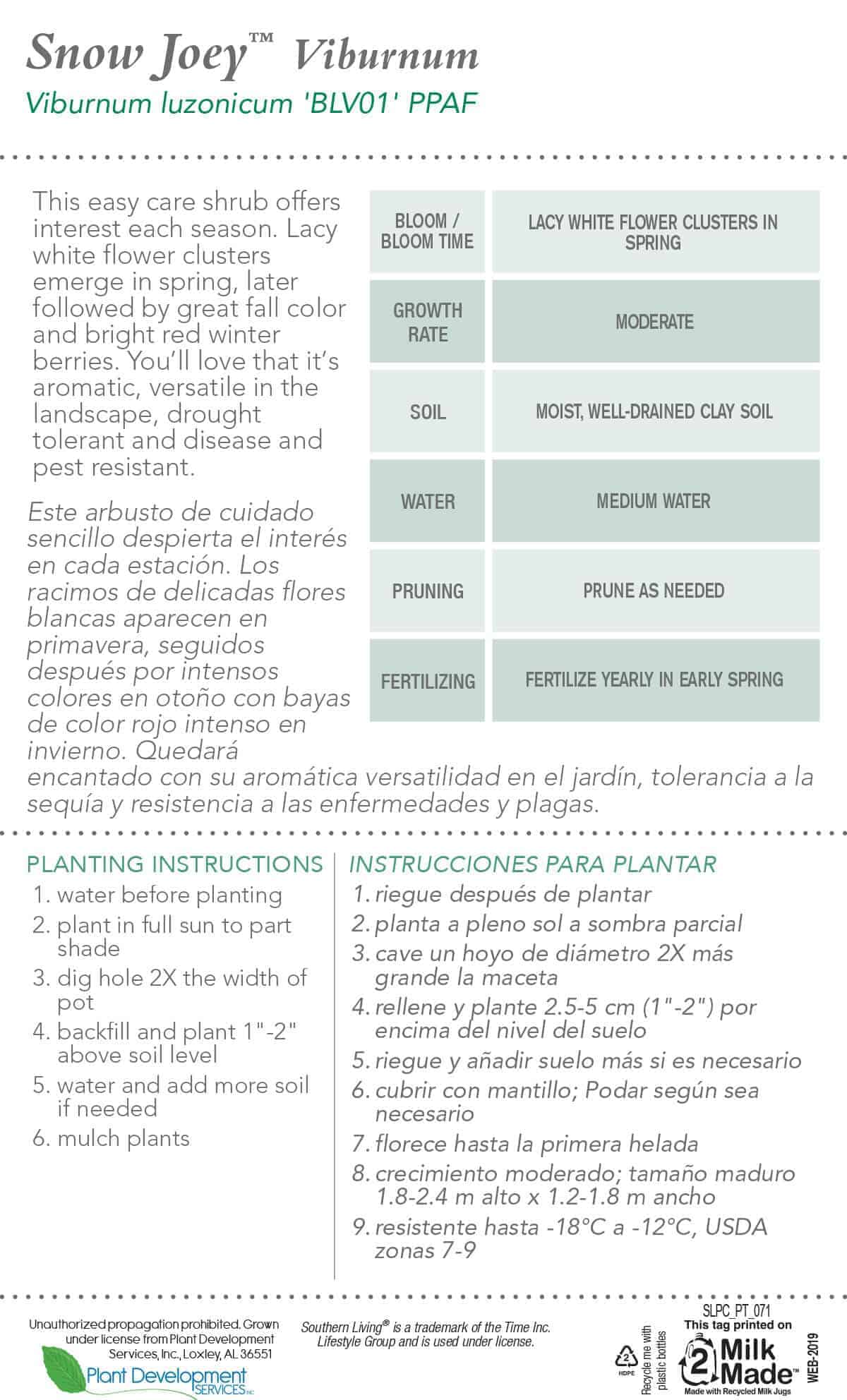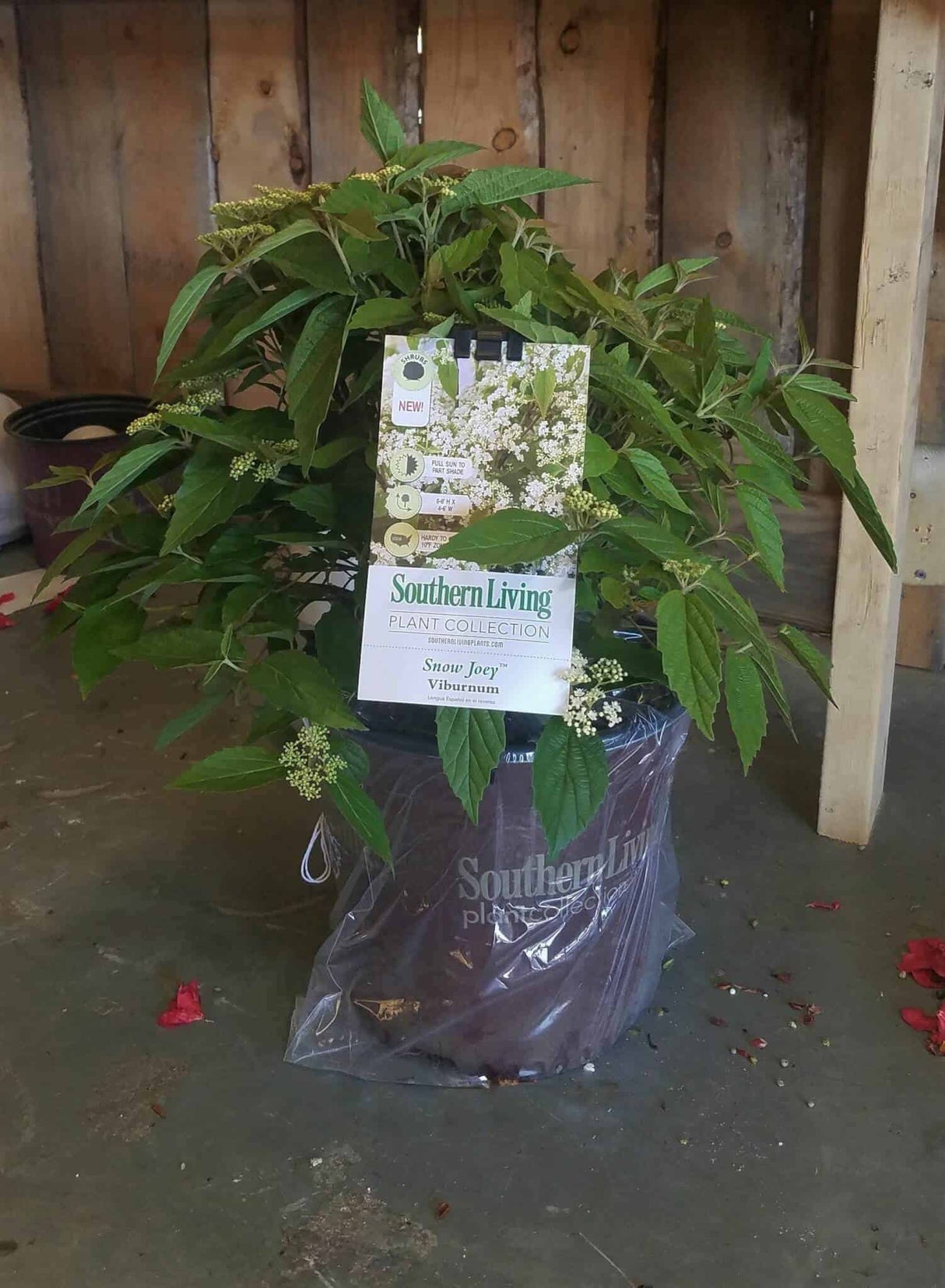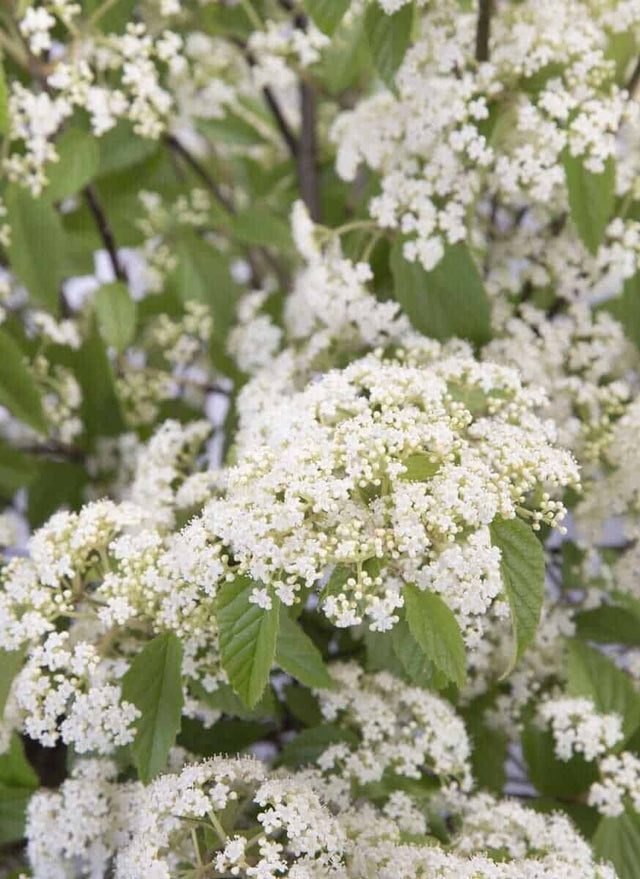Snow Joey Viburnum
Snow Joey Viburnum - 2.5 Quart is backordered and will ship as soon as it is back in stock.
Description
Description
Seasonally diverse and beautiful, the Snow Joey® Viburnum from the Southern Living Plant Collection makes itself at home in almost any landscape. Lacy, bright white flower clusters appear in spring. These petite white blooms are in 1-2 inch bunches with a central stem, often called a cyme, and feature a notable, characteristic Viburnum fragrance. These flowers are perfect for cut flowers, and will bring their trademark fragrance with them. These attractive blossoms sit atop crisp green foliage, that creates an eye-catching display. This deciduous shrub will go dormant in early winter and emerge triumphantly in spring.
Fall sees the Snow Joey taking on a brand new look for the new season. Rich green foliage turns to a deep reddish-purple, creating a new twist on this fantastic shrub. Bright red winter berries follow, adding further interest to your landscape. Besides its versatility, the Snow Joey Viburnum is particularly drought tolerant, as well as disease and pest resistant. Additionally, this Viburnum is notoriously popular with birds due to its berries, as well as its branches, which are great for nesting.
Use this viburnum bush as an accent, specimen, hedge, container, or mass planting. Mass plantings will create quite a spectacle when in bloom, while a specimen planting beautifully draws attention. Container plantings will create a unique display that is sure to impress.
Mature specimens will reach 6-8' H x 4-6' W, so be sure to give them plenty of space to grow. Furthermore, pruning is unnecessary but helps to preserve its shape after flowers have fallen off in late spring.
Snow Joey Viburnum Maintenance and Care
Plant in Full Sun to Part Shade for best results.
The Snow Joey Viburnum tolerates a wide range of soil. However, well-draining soil will help to prevent root rot.
Water regularly after planting, at least a few times a week. This will encourage roots to grow deeper, helping to ensure future success.
Fertilize in early spring with a well-balanced, slow-release granular fertilizer, or balanced organic fertilizer.
Care & Use
Care & Use
Spacing Recommendations
Spacing Recommendations
-
Scientific Name
-
Hardiness Zone7, 8, 9
-
Sun ExposureFull Sun to Part Shade
-
Evergreen or DeciduousDeciduous
-
FeaturesAttracts Birds / Butterflies, Disease Tolerant, Drought Tolerant, Flowering
-
Feature ColorGreen, Red, White
-
UsesAccent, Container, Hedge, Mass Planting
-
Water NeedsMedium
-
Bloom SeasonSpring, Fall
Growing Zones : 7, 8, and 9

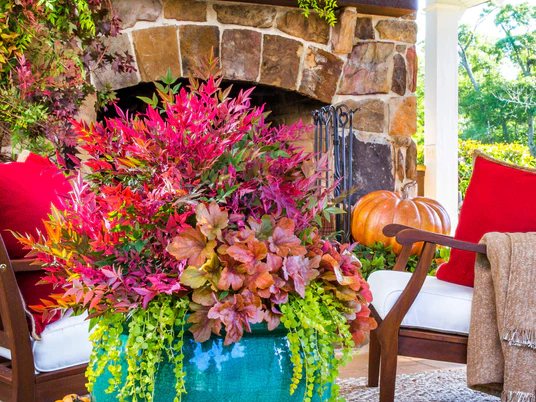
Southern Living Plants
